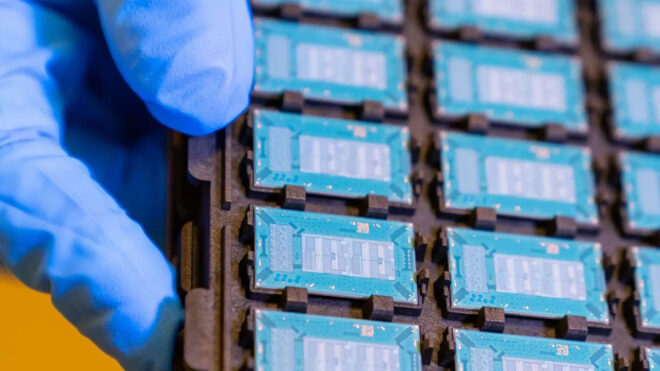Technology giant, one of the most valuable technology companies in the world apple, “Glass substrate” studies in processor production doing.
Appleaccording to new information Samsung And Intel (He has been working on this topic for a long time and is considered a leader in the field) that we will encounter in the coming years, such as M-Series processors “glass substrate (Glass Core Substrates / GCS)” is working to build on the technique. The company, which is reported to be in active negotiations on this issue, is not involved in processor design or production. “revolutionary” With the glass substrate seen as higher temperature resistantand accordingly aims to produce processors that can deliver higher performance. More hardware/parts placed per unit area or in other words Glass substrate technique, which is reported to allow more processing power to be obtained from unit areaIt also allows processors to provide maximum performance under high temperatures for much longer than before. For now, it is probably 7-8 years away However, this promising technology is, as far as it is said, Samsung, Intel, APple and more are among the most important technologies that many major chip / processor manufacturers want to use commercially.
YOU MAY BE INTERESTED IN
Meanwhile, not all of Apple’s hardware efforts yield results. For example, as we soon learned, the company plans to develop MicroLED displays for its smart watches, as shared by Mark Gurman. left. In recent months, news of the cancellation of the Apple Watch Ultra with MicroLED screen, which has been on the agenda for a long time, was on the agenda. Analyst Ming-Chi Kuo stated that Apple thinks that the MicroLED technology in question cannot add significant value to its smart watches and that its production costs are too high. Then Mark Gurman spoke and announced that the tech giant has shelved its plan to develop an in-house MicroLED display for its smartwatches.
It is reported that Apple laid off part of the team working on this project and shifted some employees to other projects. It is said that MicroLED is too complex and expensive for the company.. MicroLED technology, whose basis is similar to OLED, differs by converting the organic material in the light-producing section into non-organic gallium nitride. (GaN) He replaces it with . In this way, the technology eliminates the need for many layers, especially polarization, and ultimately paves the way for the production of much thinner panels.
Since each pixel illuminates itself, these panels do not require any extra backlighting and operate with much better energy efficiency than OLED. According to technical details, microLED consumes exactly 50 percent less energy than OLED, making it a great option for mobile devices with small batteries. MicroLED, which does not have screen burn-in problems like OLED and generally has a much longer lifespan, not only offers higher brightness and contrast, but also supports high color gamuts.
